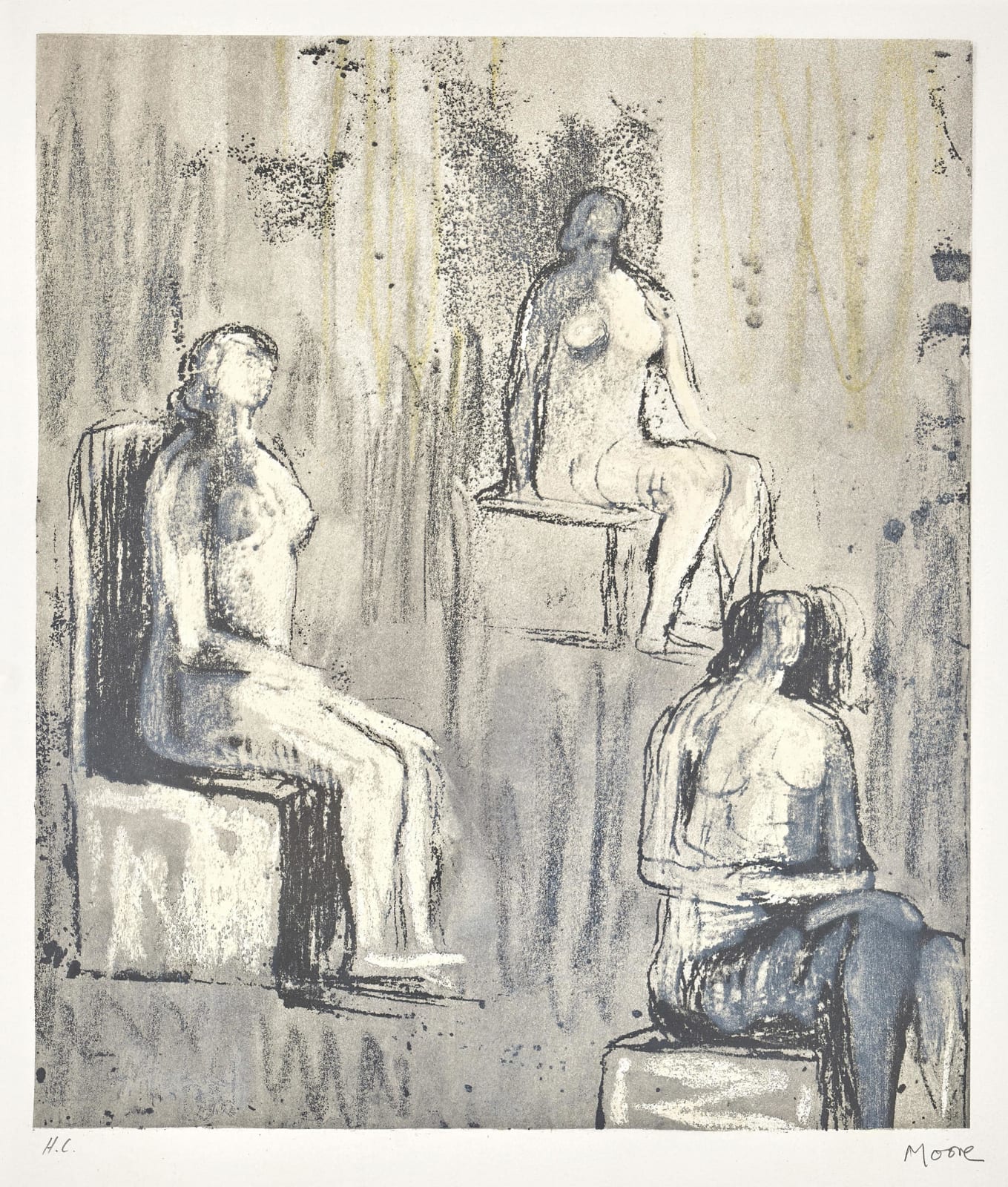Henry Moore U.K., 1898-1986
Three seated figures, 1981
Colour lithograph on paper.
Hand signed and numbered by the artist.
Hand signed and numbered by the artist.
paper size: 33 x 28 cm
framed: 55 x 40 cm
framed: 55 x 40 cm
Copyright The Artist
Although Henry Moore is best known for his sculpture: for his large scale bronze works on display in cities throughout the world, for his semi-abstact carvings and representations of the...
Although Henry Moore is best known for his sculpture: for his large scale bronze works on display in cities throughout the world, for his semi-abstact carvings and representations of the female form, he was an exceptionally talented draughtsman, producing a body of nearly 7,500 drawings over seven decades. He found that its eclecticism and ease of use made drawing an ideal medium for a wide range of purposes: from a tool to study natural forms or the work of other artists to means for the development of new sculpture, or as a way to experiment with languages and techniques. However, for Moore drawing was not merely a means to an end, but also a medium for finished artwork in its own right – so much so that he was sometimes referred to as a ‘sculptor and painter’. The human figure, enigmatically isolated or in relationship with others, is both the stimulus and the crux of all Henry Moore’s works. For him, creating his sculptures was not so much an abstract exercise in looking at the human figure, but a personal investigation and violation of the artist’s own body.








